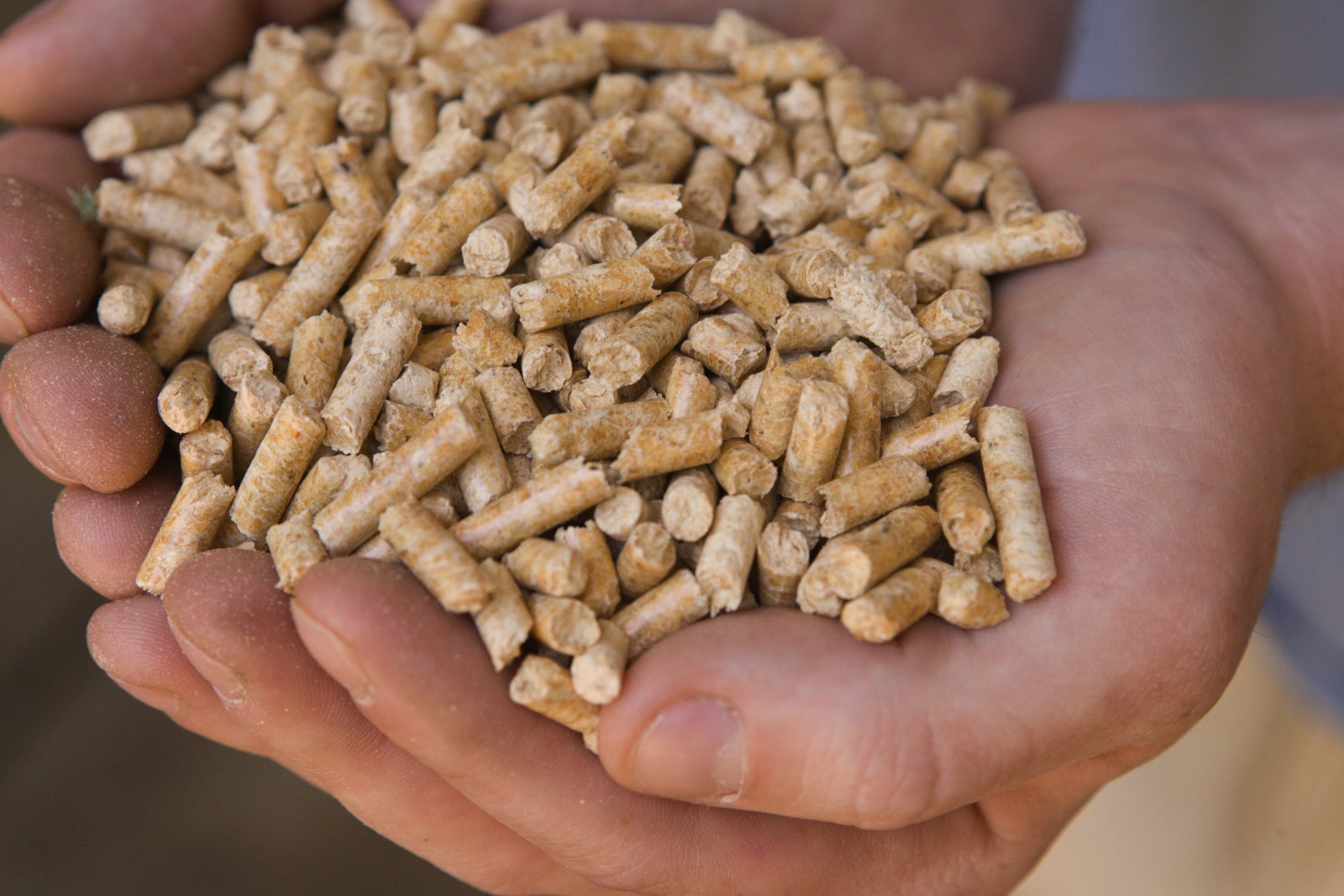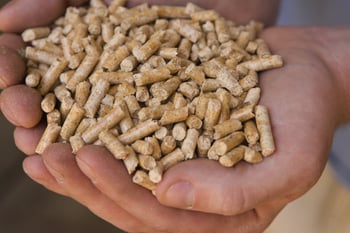
Last month, the European Biomass Association (AEBIOM) published its statistical report for 2016, which provides a detailed assessment of the bioenergy sector in the European Union (EU). Despite 2016’s slowdown in new pellet activity, as well as the uncertainty surrounding a number of geopolitical events and their effects on global markets, this year’s report also includes a market forecast based on past trends and a snapshot of how European bioenergy markets may evolve in the near and long terms.
Despite the commitment to global renewable energy expansion at the COP21 conference in Paris, the EU still remains highly dependent on imported fossil fuels to meet its energy demands. Understandably, transitioning to an expanded energy portfolio will take time to implement. To provide some scope of what the EU is facing, its average energy dependency in 2014 was 53 percent, with fossil fuels making up over 99 percent of net imports of energy. (In comparison, the US has an energy dependency of 14 percent.) However, renewables show promise for expanding the EU’s future energy portfolio.
The report also notes that the increasing consumption of bioenergy is expected to continue, and the consumption of biomass for energy should increase by at least 33 million tons by 2020. The increasing demand is due to the fact that biomass is the only renewable energy source that offers solutions across all energy sectors, including transportation, power, and heating and cooling. Heinz Kopetz, president of World Bioenergy Association, said that “Biomass is by far the leading renewable energy source. Its contribution of 123 million tons to the energy supply—primary energy production—is almost as high as that of indigenous gas and higher than that of oil.”
Woody Biomass & Bioenergy
While the demand for wood pellets cooled in 2016, the surge in woody biomass use in the EU over the last 15 years has been extraordinary. In AEBIOM’s 2015 report, the organization offered insight into how woody biomass is consumed at the EU level and they found the residential sector still makes up the bulk of wood energy consumption (27 percent). This is followed by the industrial use of wood chips in facilities above 1 MW (22 percent) and small-scale use of wood chips (14 percent).
Pellet consumption has grown, but represents just 6 percent of total EU wood energy consumption. Between 2014 and 2015, pellet consumption increased 7.8 percent; 12.9 million metric tons (63.9 percent) were used for heat production, and the remaining 7.3 million metric tons (36.1 percent) of pellets were used for power production in 2015.
For a snapshot of where pellet use was a year ago, AEBIOM’s 2015 report adds:
- In 2015, wood pellet consumption reached 20.3 million metric tons, or 6 percent of total solid biomass used. A majority of consumption was for heat production at 13 million metric tons in 2015 (64 percent) and the remaining 36 percent of pellets (7 million metric tons in 2015) were used for power production.

- The UK is the largest consumer of wood pellets at 5.7 million metric tons, increasing between 2014 and 2015 by 21.4 percent.
- Much of this pellet demand is derived from European forests; in 2014, 13.5 million metric tons of wood pellets were produced in the EU, amounting to roughly 50 percent of global world production.
- Roughly 70 percent of total bioenergy feedstock delivered in Europe originates from the forestry sector and the remaining 30 percent comes from waste and agriculture.
- Germany is the largest producer of wood pellets at around 2 million metric tons per year, followed by Sweden, Latvia, Estonia and Austria.
Jeffrey Skeer of the International Renewable Energy Agency noted in the 2016 AEBIOM report that the renewable share of energy use for electricity and heat has nearly doubled in the last decade. Much of this growth has been due to the expansion of biomass in combined-heat-and-power (CHP) plants and urban district heating plants. Biomass accounts for nearly a fifth of renewable electricity production and nine-tenths of renewable heat.
Around half of total EU energy consumption comes from heating and cooling, of which 82 percent is powered by fossil fuels. But the heating sector is still the largest single market segment for bioenergy consumption (73 percent). District heating networks carrying derived heat to individuals and businesses is also an important part of EU consumption; five countries currently account for more than 50 percent of bioheat consumption. Germany is the largest consumer at 11.1 metric tons of oil equivalent (Mtoe), Sweden follows at 8.8 Mtoe, and France at 7 Mtoe.
Bioenergy only represents 18 percent of renewable electricity production, but biomass will play a growing role as an on-demand backup energy source, according to AEBIOM. A majority of this biopower (60.4 percent) comes from CHP plants. “The use of biomass in CHP increases the overall efficiency and lower emission and fuel consumption when producing green power,” said Aners Nordstrom with DONG Energy.
Woody Biomass & Biofuels
In the transportation sector, renewables represent 5 percent of EU total energy consumption, 90 percent of which is provided by biofuels. According to AEBIOM, the transport sector has always been the most challenging in terms of market penetration. The real challenge lies in developing cost-effective fuels at scale that also comply with the Indirect Land Use Change Directive from last year. The new directive limits the use of biofuels derived from feedstocks that compete with crops grown on agricultural land to 7 percent, while allowing member states the leeway to set lower national limits. It also sets a 0.5 percent target for second generation biofuels (those derived from biomass), whose contribution would count double towards the 10 percent renewable energy target for transport.
Challenges aside, Skeer also noted that the renewable share of energy for transport has expanded significantly, partially due to the use of biodiesel and bioethanol. “Advanced liquid biofuel technologies, which can make use of lignocellulosic feedstocks from rapidly growing trees and grass, should become an important part of the energy picture as they mature,” Skeer added.
Outlook
While there have been interim national targets set from the beginning of the EU Renewable Energy Directive initiated in 2001, the overriding goal is to reduce EU greenhouse gas emissions by 20 percent (compared to 1990 levels) and increase renewable energy production by 20 percent. The 2016 AEBIOM report highlights the crucial role bioenergy must play to meet these objectives.
In 2014, bioenergy accounted for 61 percent of all renewable energy consumed, or 10 percent of the gross final consumption of energy in the EU. Since bioenergy is the only renewable source that can provide green energy for heating and cooling, power generation and transportation fuel applications, AEBIOM believes that solid biomass (woody biomass) is the market driver for the bioenergy market in the near term.





